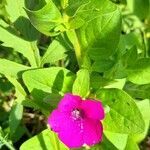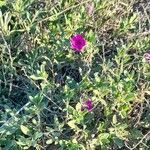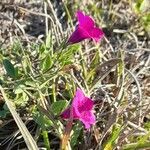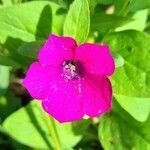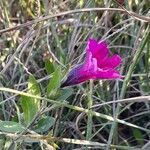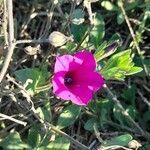Leaves shortly petiolate; lamina membranous, 2–5 × 0.6–3.5 cm, elliptic or ovate to lanceolate, spathulate or obovate, base cuneate, apex acute to obtuse, sometimes sub-acuminate, entire or somewhat repand, glandular hairy at least along the margins and to a varying extent on the surfaces.
Stamens subequal, one shorter and 2 slightly longer; filaments 1.3–1.6 cm long, attached about one-third down the corolla tube, geniculate just above the insertion; anthers bluish, c. 1.5 mm long, deeply cordate.
Calyx 10–18 mm long, hairy all over; laciniae unequal, 8–15 × 1.5–3 mm, linear to spathulate, acute to obtuse, more densely hairy at the margins, erect or ± spreading; in fruit somewhat enlarged.
Sprawling to erect herb (low shrub), up to c. 60 cm high, sparingly to densely branched often from near the base, aromatic, densely covered with viscid-glandular hairs.
Ovary 3 × 1.5 mm, elongate-conic or subpyramidal, glabrous; style 2–2.3 cm long, somewhat geniculate at the top.
Fruit stramineous, c. 10 mm long, with the foveolate placenta persistent after seeds have fallen.
Flowers ± erect; pedicels 1–6 cm long, slender, elongating in fruit, hairy.
Disk yellowish, 0.8 mm high, laterally sulcate, crenate-repand.
Seeds pale to dark brown, ± globose or globose-prismatic.
Branches angular or somewhat winged.
